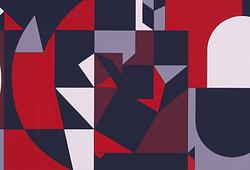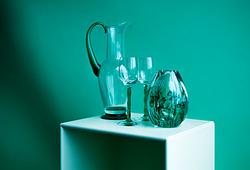Carl Larsson
"I lövsprickningen"
Signed Carl Larsson and dated Paris 1881. Canvas 50 x 61 cm.
Provenance
Magaliff Konst och Antikhandel, Stockholm.
Mrs Elna Pousard Collection, Stockholm.
Bukowski Konsthandel, Stockholm (sold to previous owner).
Bukowski Auktioner AB, Stockholm, auction 554, "Höstens Klassiska Auktion" (Autumn Classic Sale), November 24, 2009, cat. no 69A.
Exhibitions
Nordiska utställningar i Göteborg, 1881.
Nationalmuseum, Stockholm, ”Opponenterna av 1885. Utställning till sextioårsminnet av det första moderna genombrottet i svensk konst”, March 16 – May 16, 1945, cat. no 295 (titled ”Trädgård med skulpturer, Paris”).
Liljevalchs konsthall, Stockholm,"Carl Larsson 100 år - Minnesutställning", 1953, cat. no 30 (owner Mrs. Elna Pousard).
Nationalmuseum, Stockholm, ” Carl Larsson”, February 7 – May 10, 1992, cat. no 28.
Göteborgs Konstmuseum, Gothenburg, ”Carl Larsson”, June 7 – September 30, 1992, cat. no 28.
Literature
Georg Nordensvan, "Carl Larsson I. 1853-1890", SAK, 1920, mentioned p. 70-71 (with title "I vårsprickningen").
”Carl Larsson. Skildrad av honom själv i text och bilder. En krönika sammanställd av Harriet och Sven Alfons”, 1952, illustrated full page in colour p. 64-65.
"Bukowski 100 år. 1870-1970", illustrated p. 87.
”Carl Larsson och hans Värld. Med bidrag av Görel Cavalli-Björkman och Bo Lindwall”, 1989, illustrated half page in colour p. 18.
”Carl Larsson” (utställningskatalog, Nationalmuseum), 1992, illustrated half page in colour p. 64.
Ulwa Neergaard, ”Carl Larsson. Signerat med pensel och penna”, 1999, illustrated in colour p. 34, listed in catalogue volume as number 80, year 1881, p. 17.
More information
"For this ramshackle building, so terrible during the cold season, is an idyll during warmer times. Picture the garden with its apricot trees, vines, lilacs, all sorts of flowers and edible leaves, as well as a little elegant drinking corner where Scandinavian Gentlemen enjoy the most wonderful views across Paris whilst, unbothered, daring to spit on passers-by."
This is how Carl Larsson described his studio garden in Montmartre, Paris, in a letter to August Strindberg dated 17th February 1881. The artist had been residing in the French capital for a few months and now winter was beginning to pass into spring. With "I lövsprickningen" he captured this longed-for moment of spring’s return to his studio garden. In the foreground we notice a chair, seemingly just abandoned. On the chair a book is left opened and next to it is a basket in which we glimpse a sunhat and freshly picked flowers. The impression is that of the imminent return of the person that has sat there, to pick up the open parasol resting against the chair.
When looking at "I lövsprickningen" it is clear to see that Larsson mastered the new French realism very early on in his career. From the 1870s young artists had increasingly begun to locate their studies abroad to France, in contrast to their older colleagues whose training had mostly taken place in Germany. At the heart of the new style was painting in ‘plein air’, with the artists abandoning their workshops and beginning to paint outdoors. New products such as ready-mixed paint in tubes made it possible for the artists to leave their studios and move freely around the city and in nature with their tools. In "I lövsprickningen" Larsson employed a desaturated and cool colour palette in shades of brown, blue and green. This tonality distinguished a great part of the new French style that he was exploring. It can be found in the work of artists such as Jules Bastien-Lepage and Jean Charles Cazin, for example. At the same time Larsson contrasted this desaturated colour tone with details in stronger colours, such as the green shade of the trees and the small red flowers on the ground:
Larsson had arrived in France on the 25th of November 1880, and six days later he wrote the following words to his parents:
"Dear parents! I have arrived! My soul is rejoicing, we shall see for how long – at least until the money finishes. It is ghastly difficult to come by studios here, but I have succeeded in finding one for 800 francs a year. It is really just a glazed veranda with three rooms and a garden. I suspect it shall be terribly cold but I shall get myself a good stove."
Carl Larsson's harsh and cold winter in the Parisian studio adds to the atmosphere surrounding "I lövsprickningen" as it becomes charged with personal meaning for the artist. Winter was finally behind him, and now he would enjoy the spring sun in the garden.
Artist
Carl Larsson is considered one of the greatest Swedish artists of all time. He was born in Gamla Stan in Stockholm and studied at the Royal Academy of Arts in the years 1866-76. After his studies in Stockholm, he traveled to France and settled in Grèz-sur-Loing. There he mainly painted garden motifs. In France, he met his future wife Karin Bergöö, who was also an artist and came to mean a lot for his artistry. Already during his student years, he made a living as a photo retoucher and cartoonist in the press. It was also during his studies that Larsson got to know Anders Zorn and Bruno Liljefors, together the three are usually called the ABC artists. At the end of the 1880s, Carl and Karin were given "Lilla Hyttnäs" in Sundborn outside Falun by Karin's father, and this is where Larsson's most famous watercolors depicting his family were created. The motifs often depict sunny landscapes with children, crayfish fishing, meals in the green and interior scenes. Larsson is represented, among other, in the National Museum, where "Gustav Vasas intåg i Stockholm" and "Midvinterblot" fills the stairwell. Represented mainly at the National Museum in Stockholm and at the Gothenburg Art Museum.
Read more
























































